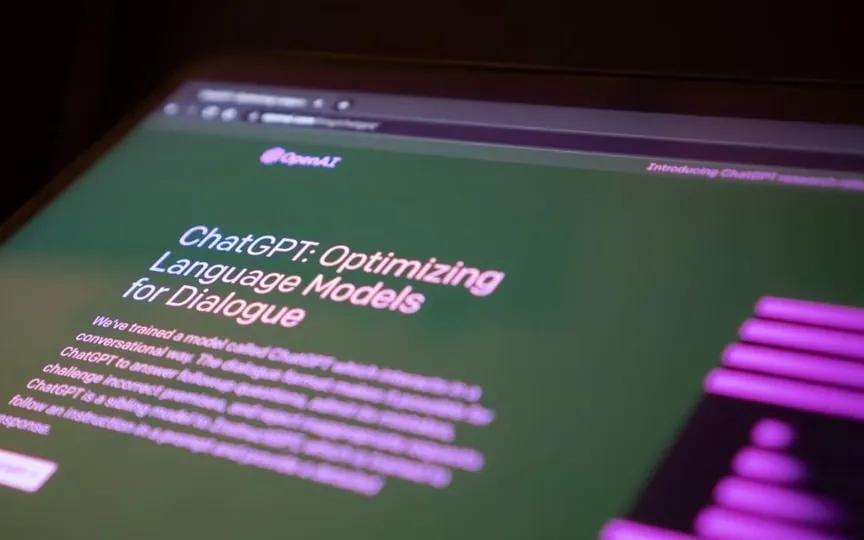Social media undergoes introspection in the year: Twitter’s decline, emergence of X and Threads, and AI’s personalized touch.
In 2023, social media users experienced a mix of new beginnings and closures, as we bid farewell to Twitter and embraced X. Some of us explored alternatives like Bluesky and Mastodon, while concerns about AI bots and the impact on teenage mental health weighed on our minds. We sought solace in private conversations and continued our endless scrolling, reminiscent of previous years. Overall, it was a year of reflection and contemplation for those immersed in the world of social media.
Here’s a look at the biggest social media stories in 2023 — and what to watch next year:
Goodbye twitter
A little over a year ago, Elon Musk walked into Twitter’s San Francisco headquarters, fired its CEO and other top executives, and began transforming the social media platform into the X it is today.
Musk unveiled the X logo in July. It quickly replaced the Twitter name and its whimsical blue bird icon on the web and at the company’s San Francisco headquarters.
“And soon we will say goodbye to the twitter brand and gradually to all the birds,” Musk wrote on the site.
Because of its public nature, and because it attracted public figures, journalists and other high-profile users, Twitter always had a big impact on popular culture – but that influence seems to be waning.
“It had a lot of problems even before Musk took it over, but it was a beloved brand with a clear role in social media,” said Jasmine Enberg, social media analyst at Insider Intelligence. “The platform still has moments of Twitter magic, like when reporters posted real-time updates on the platform about the OpenAI drama, and the platform’s smaller communities are still important to many users. But the Twitter of the past 17 years is largely gone, and X’s raison d’être it’s dusk.
Since Musk’s takeover, X has been bombarded with misinformation and racism, suffered significant advertising losses, and suffered declining usage. It didn’t help when Musk started ranting in a stage interview about companies that had stopped spending on X. Musk claimed that advertisers who were drawn to “extortion” and told using profanity. them to get lost.
Continuing a trend of welcoming back users previously banned by Twitter for hate speech or misinformation, in December Musk reinstated conspiracy theorist Alex Jones’ X account, citing an unscientific poll he sent to his followers that appeared in an Infowars host that repeatedly invoked 2012’s Sandy Hook -school shooting as a hoax.
At the same time, LGBTQ and other organizations that support marginalized groups have raised alarms about the deterioration of X’s security. In April, for example, it quietly removed a policy against “targeted misgendering or dead naming of transgender individuals.” In June, the advocacy group GLAAD called it “the most dangerous platform for LGBTQ people.”
GLSEN, an LGBTQ education group, announced in December that it was leaving X to join other groups such as the suicide prevention nonprofit Trevor Project, saying Musk’s changes “have created a new platform that allows its users to harass and target the LGBTQ community without restraint or discipline.”
HELLO X. AND threads. AND BLUESKY
Musk’s goals for X include turning the platform into an “everything app” — like China’s WeChat, for example. Problem? It’s not clear whether US and Western audiences are keen on the idea. And Musk himself has been pretty vague on the details.
As X struggles with an identity crisis, some users began looking for a replacement. Mastodon was one of the competitors, along with Bluesky, which actually grew out of Twitter – the pet project of former CEO Jack Dorsey, who still sits on its board.
When tens of thousands of people, many of them fed-up Twitter users, started signing up for the (still) invitation-only Bluesky in the spring, fewer than 10 people were working on the app, CEO Jay Graber said recently.
That meant “mixing to keep everything running, keeping people online, encryption to add features that are on the roadmap,” he said. For weeks, the work was just about “scaling” – making sure the systems could handle the power.
“We had one person on the app for a while, which was very funny, and there were memes about Paul versus all the engineers at Twitter,” he recalled. “I think we only hired another app developer after the crazy growth spurt.”
Seeing an opportunity to attract disgruntled Twitter users, Facebook parent Meta launched its own competitor, Threads, in July. Its popularity skyrocketed when tens of millions started to register – although keeping people involved has been a bit of a challenge. Then in December, Meta CEO Mark Zuckerberg announced in a surprise move that the company was testing interoperability — the idea championed by Mastodon, Bluesky and other decentralized social networks that people should be able to use their accounts across platforms — kind of like your email address or phone number.
“Starting a test where messages from Threads accounts are available on Mastodon and other services using the ActivityPub protocol,” Zuckerberg wrote on Threads in December. “Making threads interoperable gives people more choice in how they interact, and it helps content reach more people. I’m pretty optimistic about that.”
PERSONAL HEALTH CONCERNS
The impact of social media on children’s mental health became harder to quantify this year when the US surgeon general warned in May that there is not enough evidence that social media is safe for children and young people – and urged tech companies, parents and guardians to take “immediate action to protect children now”.
“We’re asking parents to master a rapidly evolving technology that is fundamentally changing how their children think about themselves, how they build friendships, how they experience the world—and technology that previous generations never had to master.” Dr. Vivek Murthy told the Associated Press, “And we’re putting all of this on the shoulders of parents, which is simply not fair.”
In October, dozens of US states sued Meta for harming young people and contributing to a youth mental health crisis by knowingly and intentionally designing features into Instagram and Facebook that attract children to its platforms.
In November, Meta’s former director of engineering, Arturo Béjar, testified before a Senate subcommittee on social media and the teen mental health crisis, hoping to shed light on how Meta’s executives, including Zuckerberg, knew about the harm Instagram was causing but chose not to. make meaningful changes to address them.
The testimony came amid bipartisan pressure in Congress to pass regulations to protect children online. In December, the Federal Trade Commission proposed sweeping changes to a decades-old law that regulates how online companies can track and advertise to children, including removing ads targeting children under 13 by default and limiting push notifications.
WHAT TO SEE IN 24
Your AI friends have arrived – but chatbots are just the beginning. Standing in a courtyard at his company’s Menlo Park, Calif., headquarters, Zuckerberg said this fall that Meta is “focused on building the future of human relationships,” painting a near future in which people interact with hologram versions of their friends or coworkers. AI bots are built to help them. The company unveiled a line of AI bots — with celebrities like Snoop Dogg and Paris Hilton lending their faces to play them — that social media users can interact with.
Next year, AI will be “integrated into almost every corner of the platform,” Enberg said.
“Social apps are using AI to increase usage, ad effectiveness and revenue, subscription sign-ups, and commerce. AI will deepen both users’ and advertisers’ dependence and relationship with social media, but its adoption will not be entirely smooth as consumer and regulatory scrutiny increases,” he added.
The analyst also sees subscriptions as an increasingly attractive source of revenue for some platforms. Inspired by Musk’s X, subscriptions “started as a way to diversify or grow revenue in the social ad business, but have continued and expanded even as the social ad market has become established.”
With major elections coming up in places like the US and India, the role of artificial intelligence and social media in disinformation will continue to be at the forefront of social media viewers.
“We’re not ready for this,” cyber security firm ZeroFox’s director of intelligence, A.J. Nash told the AP in May. “For me, the big leap forward has been the emergence of audio and video capability. When you can do that on a large scale and share it on social platforms, well, that makes a big impact.”




